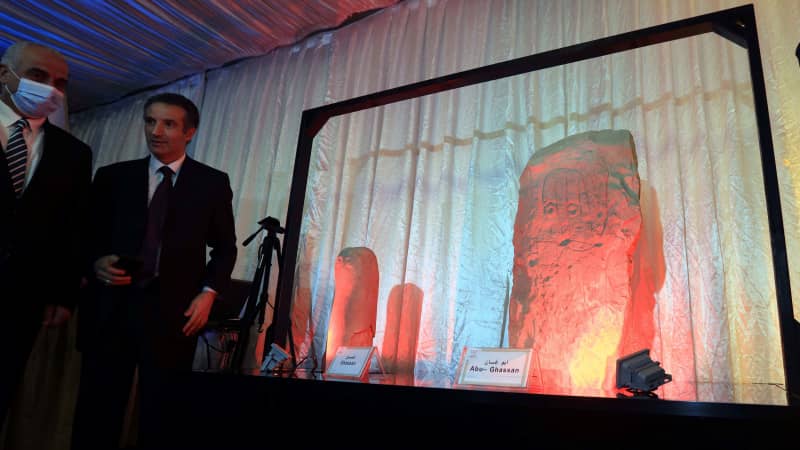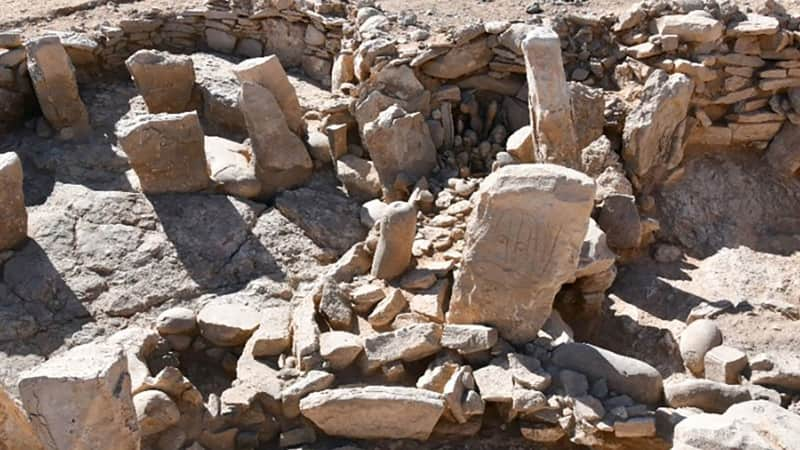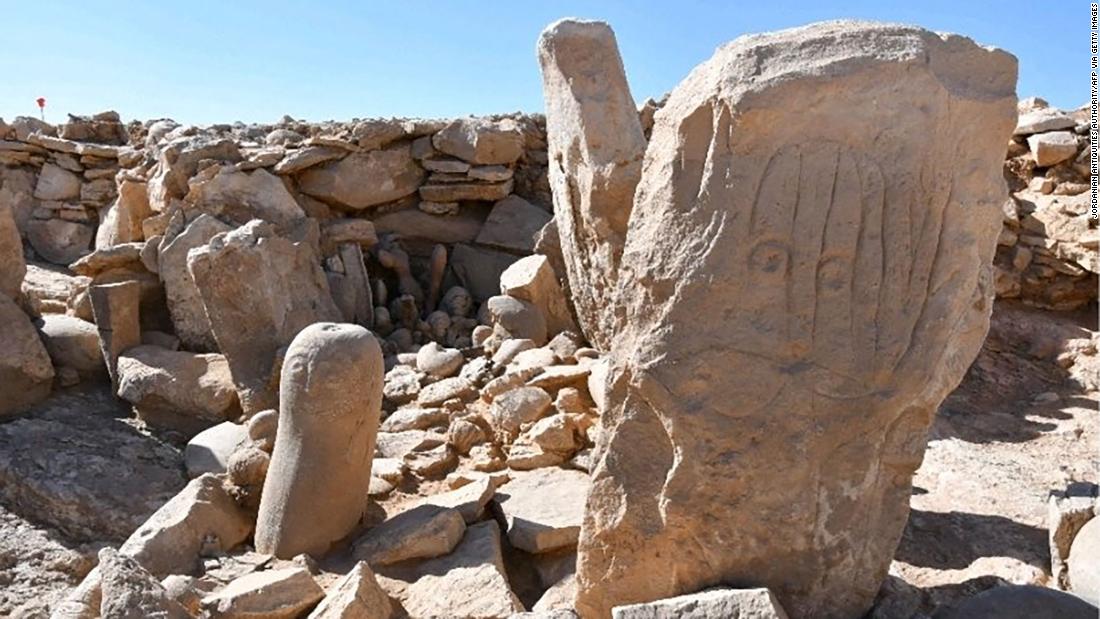(CNN) — In a major new archaeological discovery, a Neolithic complex of 9,000-year-old stone carvings has been uncovered in Jordan’s southeastern desert.
The find was recorded by a team of Jordanian and French archaeologists and announced on Tuesday at a press conference held by the Jordanian Ministry of Tourism and Antiquities.
The site is believed to be a unique ritualistic installation dedicated to the hunting of gazelles, and features gigantic stone traps known as “desert kites,” which the researchers say are the world’s oldest large-scale human-built sculptures.

The anthromorphic carvings are a rare insight into Neolithic spiritual expression.
Jordanian Antiquities Authority/AFP via Getty Images
This latest discovery was made in October 2021 by the South Eastern Badia Archaeological Project (SEBAP), headed by Mohammad B. Tarawneh and Wael Abu-Azziza, who have been investigating the region for the past decade.
The “desert kite” hunting traps consist of long stone walls which led prey to an enclosure in which they could be corralled, and were first discovered by the team in the Jibal al-Khashabiyeh area in 2013.
This led then to the discovery of campsites used by the hunters whose lives were centered around the desert kites and the catching of game. The residents lived in semi-subterranean circular huts, and pottery and animal bones have previously been unearthed.

The announcement was made at a press conference by Jordan’s Ministry of Tourism and Antiquities.
Mohammad Abu Ghosh/Xinhua via Getty Images
Archaeologists say the new discovery gives an insight into these ancient people’s creative and spiritual expressions. It consists of two stone carvings, which have been named Ghassan and Abu Ghassan. The taller of the two, at 112 centimeters, has been carved with the representation of a desert kite incorporated with a human figure, while the smaller, at 70 centimeters, has a finely detailed human face.
Other finds include a ritual altar stone, a hearth, a carefully arranged collection of some 150 marine fossils, as well as animal figurines and delicately executed flint objects.
“This is the only architectural model of its kind known to date worldwide in a Neolithic context,” says SEBAP in a statement.

The desert campsites were used by Neolithic hunters who lived in circular huts.
Jordanian Antiquities Authority/AFP via Getty Images
These rare anthromorphic carvings are some of the oldest artistic expressions in the Middle East, and the team says that the altar and associated hearth suggest that they were likely used for sacrificial offerings.
“The sacral symbolism and ritual performance evidenced were most likely devoted to invoke the supernatural forces for successful hunts and abundance of preys to capture,” says SEBAP. “It sheds an entire new light on the symbolism, artistic expression as well as spiritual culture of these hitherto unknown Neolithic populations [who] specialized in mass hunting of gazelles using the ‘desert kites.'”
